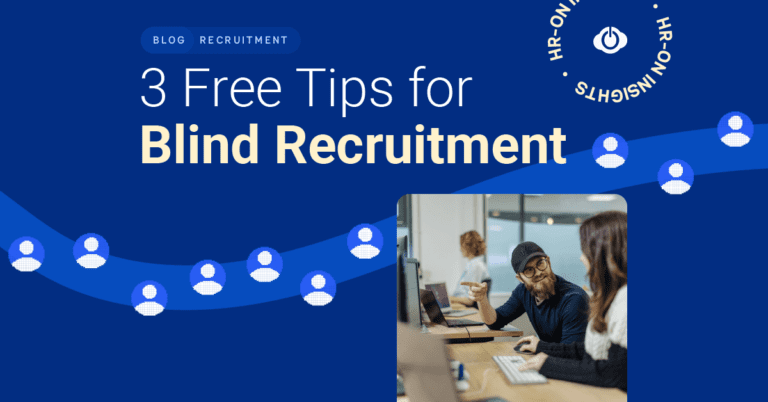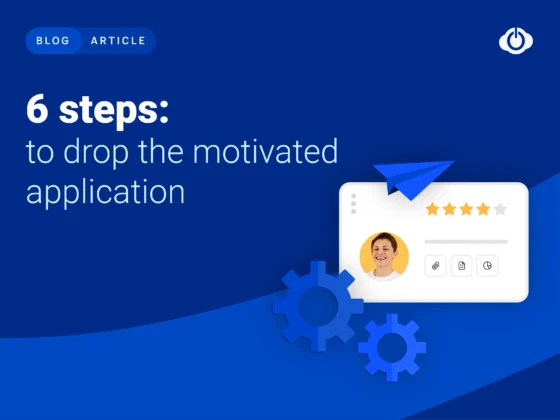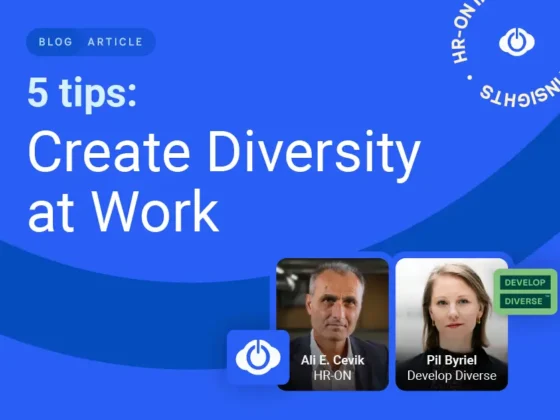Blind Recruitment: How to Get Started
Do you want a diverse workplace that is inclusive of everyone? It starts with how you recruit. Studies show that we are biased in recruitment and unconsciously choose candidates who resemble ourselves. With blind recruitment, you can increase the likelihood of hiring more diverse candidates.
It takes focused work to create a workplace that is diverse and inclusive. It all starts with the recruitment of new employees. However, when it comes to addressing the recruitment committee’s unconscious bias, blind recruitment can be implemented as a solution.
What Is Blind Recruitment?
Blind recruitment occurs when identity markers are removed from the candidates’ data. This way, the recruitment committee is blind to the factors that, according to science, color our judgment when recruiting new employees. Identity markers are, for example, gender, age, and ethnicity.
In this article, you can read about:
Recruitment Managers: We Are Influenced by Our Own Bias
According to Swedish science, it relates to “homosociality”. That covers how people who remind of one another also identify and orient themselves toward each other. Therefore, the tendency can be to hire someone who reminds one of oneself because then you know what you get.
The numbers from The Recruitment Analysis 2024 from the Danish Konsulenthuset Ballisager show that recruitment bias occurs. In the analysis, 80 % of the participants said that they are well aware that they are influenced by their values and points of view and know when it happens.
It’s important to be aware of one’s unconscious bias. It is like a pair of glasses that you see the world through, and that is how humans are born from nature’s perspective. That is also why it can be difficult to ignore, but blind recruitment can help some of it.
You might also like: Data Minimizing – Recruitment Must Have
Who Is Blind Recruitment Meant For?
In theory, blind recruitment benefits all kinds of companies and organizations. However, there are positions where blind recruitment is not valid – e.g., gender-specific jobs such as those held by Catholic priests, which historically only men had. But then again, only a few end up on a recruitment committee like that …
In practice, blind recruitment works so that you do not get data from the candidates that indicate gender, age, and ethnicity. Next, candidates are assessed based on their qualifications and competencies and invited for a job interview, which is the first time you will see the candidate.
Hereafter, at the job interviews, the process is no longer blind, but hopefully, the pool of candidates will be more diverse than if the first part of the recruitment process had proceeded as usual.
What Are the Advantages and Disadvantages of Blind Recruitment?
One of the perks of using blind recruitment is increasing the possibilities for a diverse pool of employees. By recruiting “blind,” you and the hiring committee avoid being affected by the unconscious bias you have. Hereby, the likelihood of hiring employees that don’t look like you. And that increases the diversity in the workplace, which also has several advantages. Read more here.
One disadvantage is that the process can be more complicated than recruiting the usual way. The complexity is because, with blind recruiting, you need to find time for someone not part of the hiring committee to review the applications and delete any data that hints at the candidate’s identity. Even if you don’t ask for name, age, gender, etc., in the application form, there might still be information about, e.g., native language, which could reveal the candidates’ ethnicity.

The colleagues Lennard and Darlene at HR-ON are talking together. Photo by: Jonas Normann
3 Tips: How to Get Started
If you want to try blind recruitment, you must approach recruiting differently than you are used to. For example, should the candidates be able to upload a profile picture or not? You can also consider letting the candidates know they shouldn’t mention the year of the final exam in primary school and completed upper secondary education, which could tell the candidate’s age.
This way, the chances of the hiring committee not getting the traditional biasing material may give a confident first impression of the candidate. Currently, the committee can concentrate on looking at only competencies and qualifications.
Here are three tips to get started with blind recruitment:
Step 1: Make it clear in the job advertisement that you use blind recruitment and, therefore, request not to receive information such as gender, age, or a photo.
Step 2: Assign an employee who is not part of the hiring committee to remove identity markers from the incoming applications and resumes
Step 3: The committee can now read the material and, from there, make a blind assessment of who should be invited for an interview
Do you want to know how to use blind recruitment with HR-ON Recruit? Contact our support.
You might also like: 5 Tips: How to Recruit for a Strong Work Culture
FAQ: What Is Blind Recruitment?
What's the definition of "blind recruitment"?
Blind recruitment is the practice of recruiting new employees blindly. It means not knowing the candidate’s identity marks, such as name, gender, age, and ethnicity. This increases the likelihood of recruiting more diverse employees.
Who is blind recruitment ment for?
Blind recruitment is, in theory, meant for all kinds of companies and organizations that aim for a more diverse workplace. Science shows that vi tends to recruit employees who look like us. Using blind recruitment as a method, you would avoid bias and recruit more diverse.
What are the advantages of blind recruitment?
The advantages of blind recruitment are that you can recruit more diverse new employees to your workplace when you do not know their identity marks, such as name, gender, and ethnicity, and when you are not influenced by your idea of what type of employee fits in the company.
What are the disavantages of blind recruitment?
One disadvantage of blind recruitment is that it is difficult to make it a 100 % blind method. For example, the cover letter could include information that the candidate’s native language is Hindi, which is a qualification that may be worth mentioning on the resume for certain types of positions. Still, it also suggests the candidate’s origin.







